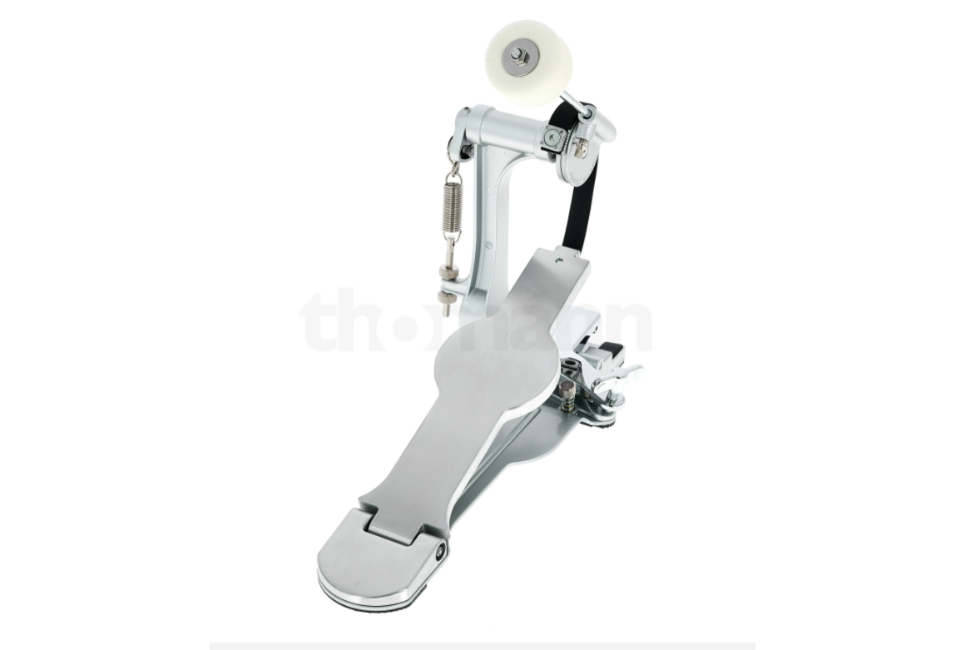- How to Find the Best Drum Pedals - December 8, 2021
- Best Marching Snare Drum Guide: With My Top 4 Recommendations - December 3, 2021
- Best Overhead Drum Mic Options - December 1, 2021
Things to Consider When Buying a Drum Pedal
When it comes to determining which drum pedal is best for you, there are literally hundreds of alternatives to consider. Long or shortboard? Belt or chain drive? What exactly is a “cam,” and why does it matter if it is “offset”? Not to mention the numerous firms to pick from. Here are the most crucial factors to consider when narrowing down your options to what is the best suit for you and your playing style.
Footboard
Begin by locating the appropriate footboard. Consider if you are the type of player that smashes the kick with your heel/tow approach or with your foot flat on the pedal. While shortboards are generally sufficient for a flat-footed player, a longboard offers more motion and possibilities. It is not only best suited for the heel/toe player, but it also allows a player to execute double strokes with more ease. Another benefit of the longboard is that it is more suited to players with large shoe sizes. The bigger board allows for a bit more space for a larger foot.
Pedal Sensitivity
How hard do you strike? A direct (or belt) drive may be your best choice if you have a light touch. It feels lighter on the foot than the chain drive. A chain drive, on the other hand, will likely fit your playing style if you prefer to bury the beater into the kick drum. They offer a little extra stability and durability for tough players. Some pedals allow you to choose between single and double chain driving. A double chain means more stability and durability. A player, on the other hand, may feel less responsive or “in sync” with the board rebound. Finally, you’ll just have to try out a few different possibilities to discover which one best matches your playing style.
Cams
Cams are the final option to consider. Cams are installed between the bottom of the drive and the top of the board. Not all pedals offer cam settings, but those that do may allow the player to have an offset cam for a greater “whip” effect with foot movement. The cam may be changeable, allowing the player to choose a setting that best matches his or her style and feel.
Some Foot Pedals I Recommend
My recommendations are always made with a broad range of applications in mind. While I acknowledge that pricing typically corresponds with quality, it doesn’t matter how excellent a pedal is if you can’t justify the price! I consider both drummers who seek the most bang for their money and those who can extend their budget and go for a higher-end bass drum pedal. I spent hours speaking with expert drummer pals, summing up the most suggested pedals in online forums and groups where drummers hang out, watching videos. I went to my local music store and evaluated some of the candidates myself to come up with the final list. While “best” is a somewhat subjective phrase when it comes to music gear, I believe my selections are all very excellent choices, and will at the very least serve as a wonderful starting point for your own study.
Tama Iron Cobra 900
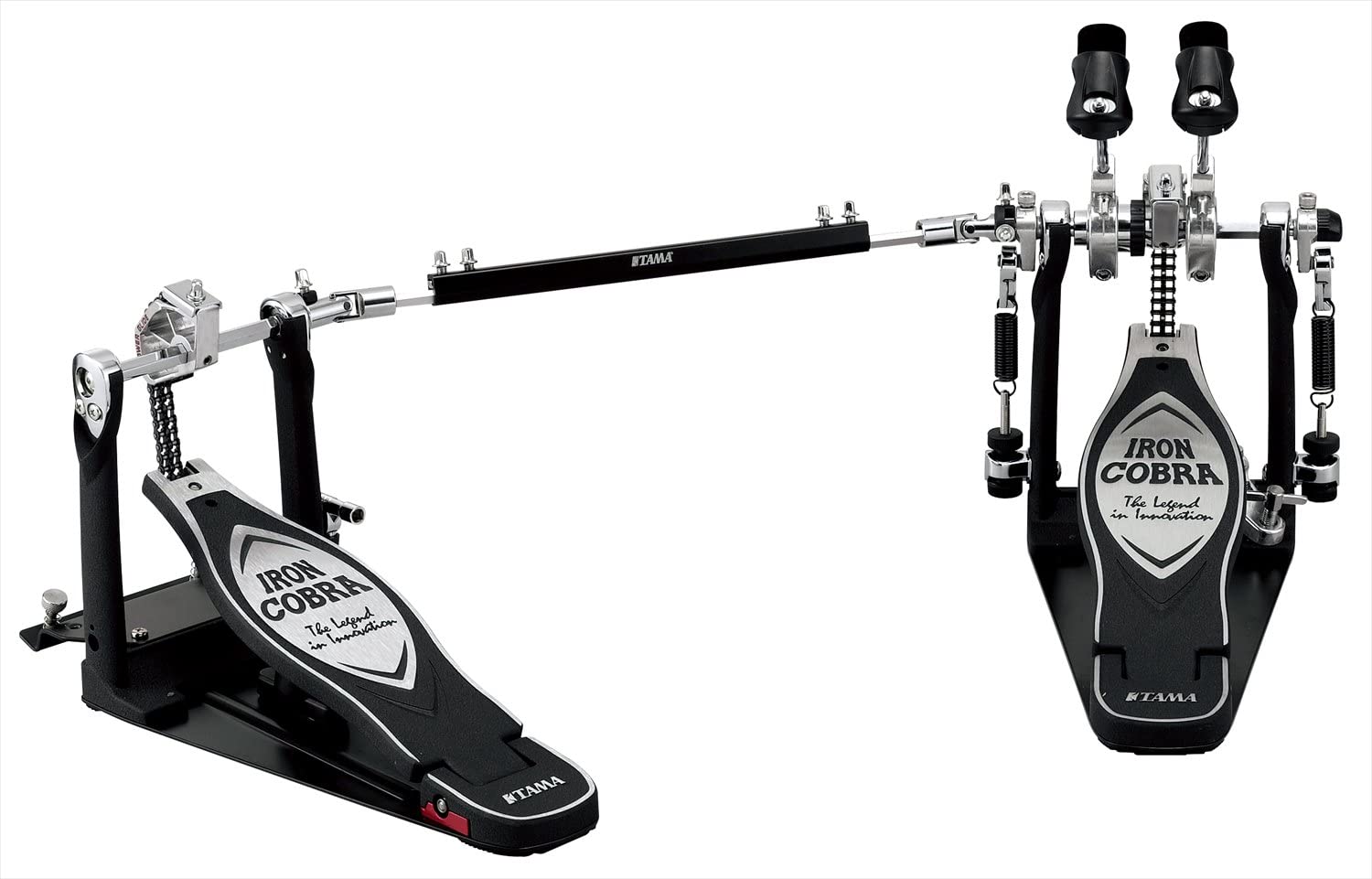
Pros
- 30 years of service
- Designed for today’s drummer
- There is a lot of room for customization
Cons
- On the pricey side
DW 5000 Bass Drum Pedal
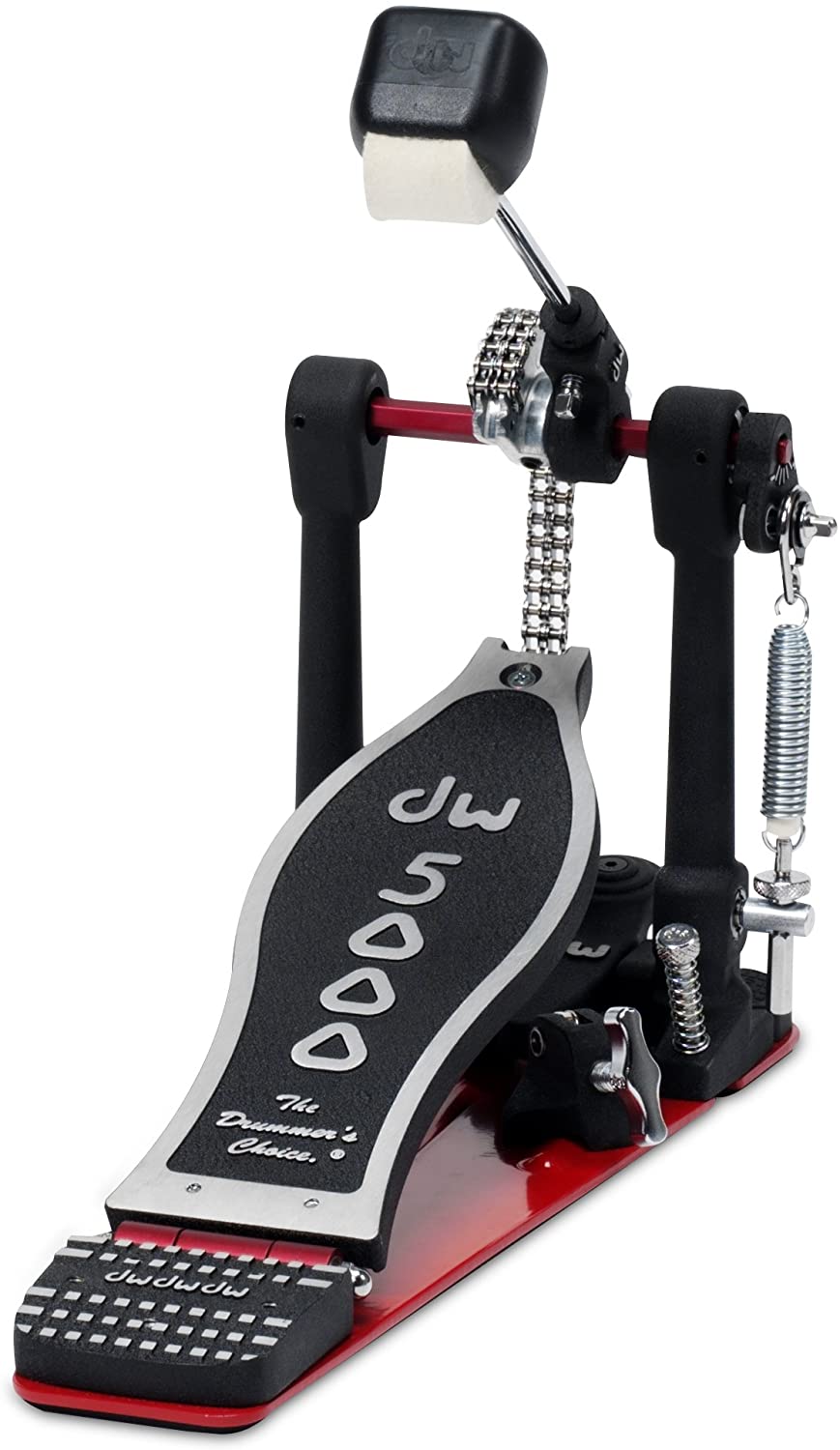
Yamaha FP9C Bass Drum Pedal
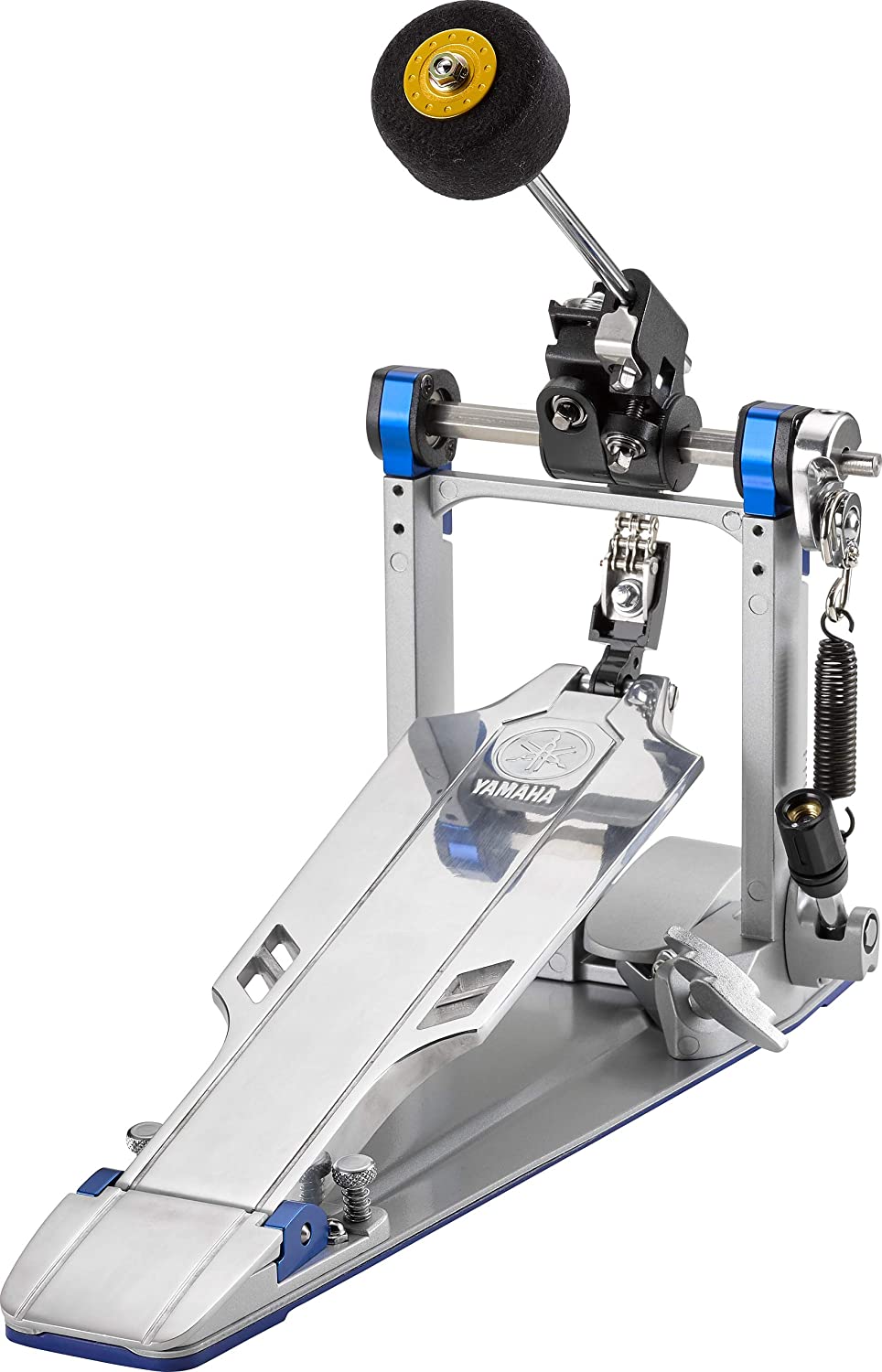
While Yamaha has traditionally developed some of the greatest hardware throughout its range of kits, its bass drum pedals have always been on the safe side, best described as ‘solid’ rather than mind-blowing. The FP9 series, on the other hand, replaces that with some high-end features and appearance.
Available in a chain or direct drive configurations (priced the same). There is a wide range of adjustments available, including separate control of the footboard and beater, as well as a sliding control over the cam’s response between linear and offset. The springs include a self-locking mechanism to keep everything safe, and the FP9 comes with beater weights in aluminum and brass for further experimenting.
The whole thing has a cutting-edge, space-age vibe to it, and we believe that whatever flavor of FP9 you select, it will likely give some more established pedals a run for their money.
Pros
- Engineering masterpiece
- Springs that self-lock
Cons
- Yamaha is new to producing foot pedals
Tama Speed Cobra Bass Drum Pedal
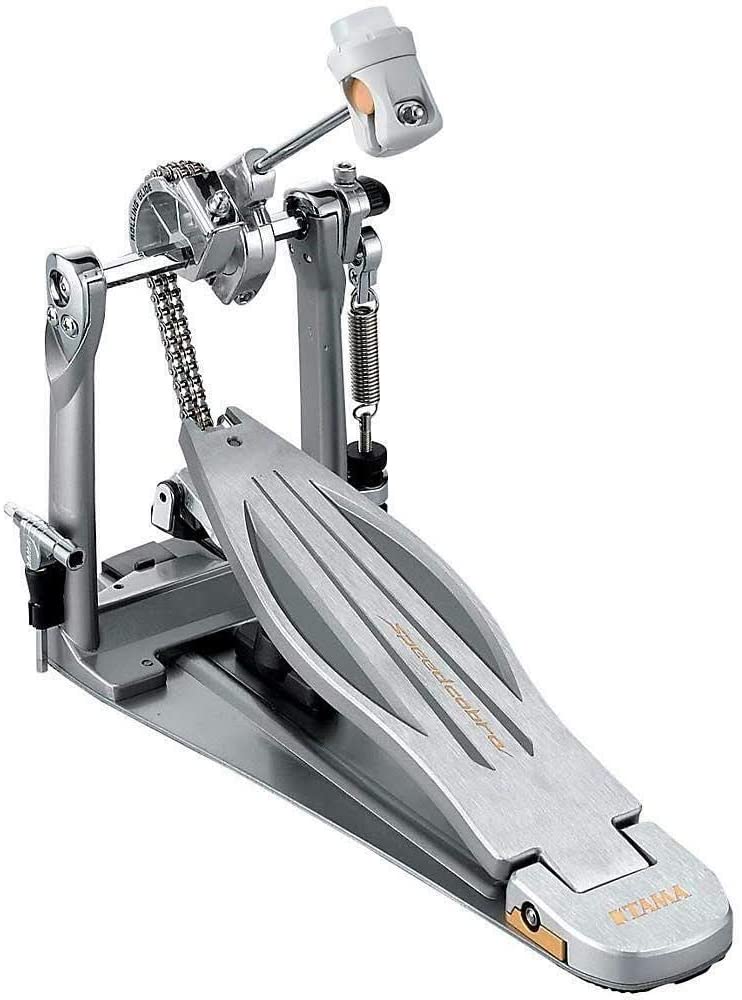
The Speedo ring, Vari-Pitch beater head, Oiless bearing hinge, Cobra Coil, and other characteristics are shared by the Tama Speed Cobra and the Iron Cobra. The Speed Cobra, on the other hand, is supposed to feel lighter than the Iron Cobra, with everything set up to respond like a Cobra after a couple of shots of espresso.
The footboard has been lengthened, and the pedal is only available with Tama’s Rolling Glide cam. The theory is that the linear response aids in maintaining faster playing speeds without the need for more pedal resistance. The Speed Cobra, unsurprisingly, has a lighter feel than the Iron Cobra, which is especially handy for double-kick action.
This pedal is a delight to use and easily lives up to its name. If you want a rapid pedal but don’t want to give up the hefty feel of a chain-driven pedal, we think this may be a revelation. We have a twin Speed Cobra for review. This pedal is without a doubt without a flaw. Simply said, it does its purpose as intended.
Pros
- Even more effective than the Iron Cobra
- Excellent for speed
- The double pedal is incredible
Cons
- Pedals can become squeaky
- The mechanism in the pedal may start to grind
DW 9000 Bass Drum Pedal

Pros
- Adaptable to your preferences
- It’s a joy to play
- Sturdy
Cons
- A bit pricey for a single pedal
Trick Pro 1-V Bass Drum Pedal

One of the top bass drum pedals in terms of responsiveness and comfort
Trick’s Pro 1-V is a trendy, sleek-looking direct-drive pedal made of machined aluminum. A compression spring is at the core of the pedal’s sensation, and all moving points have ball bearings to maximize the pedal’s smooth motion. Trick was also able to incorporate a design element that allows for incredibly rapid and easy tension adjustment due to the usage of compression springs. To firm up or slacken the pedal feel, grab hold of the knurled knobs and turn them. It’s as easy as that.
The Pro 1-Vs have a surprising directness of reaction and consistency of pedal sensation, and they seem as though they’re connected to your head rather than your feet.
The delightfully simple method in which you can set up and customize the feel of the Pro 1-Vs makes them a true contender for anyone with a large enough wallet to cover the pricing. Yes, these are pricey options, but cutting-edge design and engineering have never been cheap.
Pros
- Excellent for technical players.
- Exceptional adaptability
- Excellent response
Cons
- It’s really quite investment because of the price
Pearl Eliminator Redline
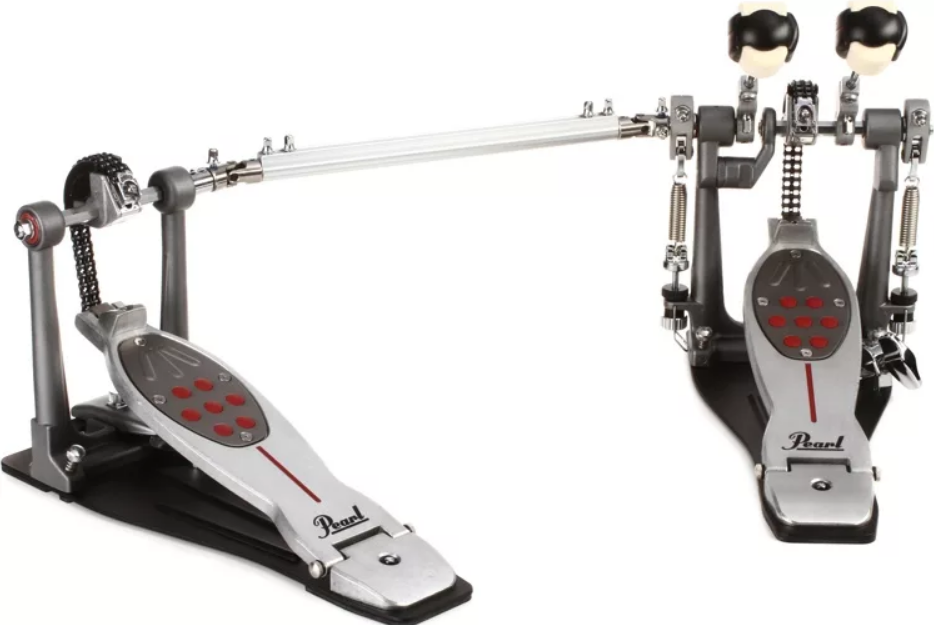
Drive: Chain or belt
Cam: 4x interchangeable
Footboard: Standard hinged
Beater type: Quad-sided plastic/felt, round/flat
Features: Ninja bearings, locking spring cradle, reversible footplate insert, side-access pedal clamp
Double pedal available: Yes, right or left-footed
Enough cams to share!
Pearl’s legendary Eliminator pedals have been a common choice among professional and amateur drummers alike, and their popularity may be attributed to its dependable dependability and the enormous breadth of personalization available. The Eliminator Redline takes this a step further. The revolutionary interchangeable cams (the pedal starts with four, but two more are available) and the ‘Powershifter’ function, which allows the entire footboard to be shifted up and down on the base are original Eliminator features. Control Core Quad beaters (two felt sides and two plastic), Click-Lock Spring Adjustment, and NiNja precise axle bearings are among the gleaming ‘Redline’ features.
The latter is well-known skateboard bearings, such as those used in Pearl’s signature Demon Drive pedals. According to Pearl, this added feature allows the Redline to outperform its predecessor in velocity tests by 85 percent.
The Redline is offered in single and double models with chain or belt drive. Despite its nearly limitless customizability, the Redline functions admirably right out of the box, with the replaceable cams making a significant difference in the pedal’s feel. It may take some time to work your way through each variant and select a preference, but for those willing to fiddle away the hours discovering their perfect set-up, the Pearl Eliminator Redline truly has a pedal for everyone.
Pros
- The power shifter feature is fantastic
- Optional chains or belts
Cons
- Precise setup might take some time
Sonor Perfect Balance Standard Bass Drum Pedal
For mere simplicity, this is one of the greatest bass drum pedals
Sonor’s Perfect Balance Standard pedal streamlines the architecture of Jojo Mayer’s trademark pedal. It’s a belt-driven pedal that’s only available as a single pedal, and Sonor has removed the folding mechanism from Jojo’s signature pedal. Other alterations include an un-etched heel plate and a footboard that has not been polished.
The same drive design continues, with the goal of delivering the, eh hem… ideal balance between the beater’s forward motion and rebound. The Perfect Balance replicates your foot movement for a silky-smooth motion that’s ideal for individuals searching for a pedal that doesn’t have too many bells and whistles but yet delivers high-level performance.
Pros
- Jojo created the design
- It’s quite easy to use
Cons
It’s not really for everyone
Mapex Falcon Bass Drum Pedals
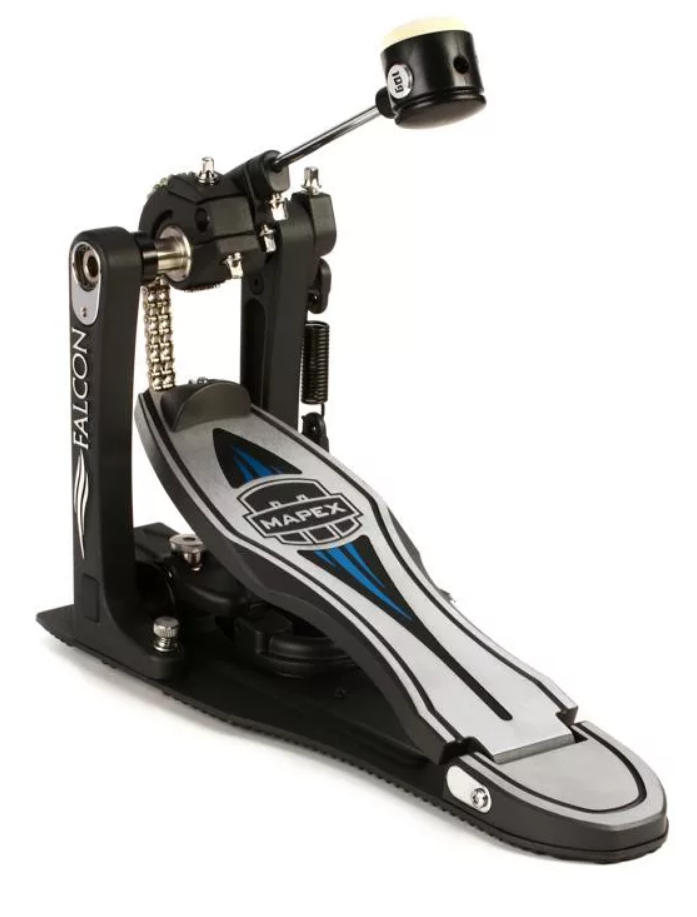
Allow your feet to fly
Mapex takes a giant stride ahead with the Falcon single (PF1000) and double (PF1000TW) bass drum pedals. It comes with two cams – linear and offset – that can be switched in a matter of minutes, and the pedal overall feels light to use (although fairly heavy, physically).
The pedals are suitable for players who play with their heels raised. The small footboard is ideal for stomping with your toes halfway down the board. It nearly forces you to play quicker. While for heels-down, we discovered that if we pushed our toes up beneath the stop, our average size 9s sat precisely on the heel plate for comfort. The Falcon boasts a plethora of adjustment options, including spring tension, beater angle, and footboard angle, yet still manages to feel effortless.
Pros
- Feel free to experiment
- It includes two cams
- Excellent for heel up players
Cons
- An old school design
Ludwig Speed Flyer Bass Drum Pedal

The Ludwig Kings modern upgrade
Ludwig’s renowned Speed King pedal was released in 2020, and it was immediately followed by the streamlined Speed Flyer. While it is based on its renowned forefather, the Speed Flyer has a slew of mainstream upgrades. The retro aesthetic features of the original pedal remain, yet this is very much a current player’s tool. An upgraded heel with smooth action bearings, a stronger and bigger baseboard for more stability and strength, and an anti-slip cam to ensure you never miss a beat are among the upgrades over the original.
The Speed Flyer is also more adjustable than the Speed King. It’s a tweaker’s dream, with everything from spring tension to cam angle and footboard height adjustable. The Speed Flyer is a burlier pedal, to be sure, but these welcome new features don’t detract from the speed and performance. Ludwig has even included a drum key attachment for the completists.
Pros
- Based on an icon
- Dependable construction
- Designed for power and stamina
- Lots of experimenting
Cons
- At certain adjustments, the footboard can hit the nut on the toe clamp
- No included bag
- As of now, I have seen no Loctite on screws, over time screws may loosen
PDP Concept Bass Drum Pedal
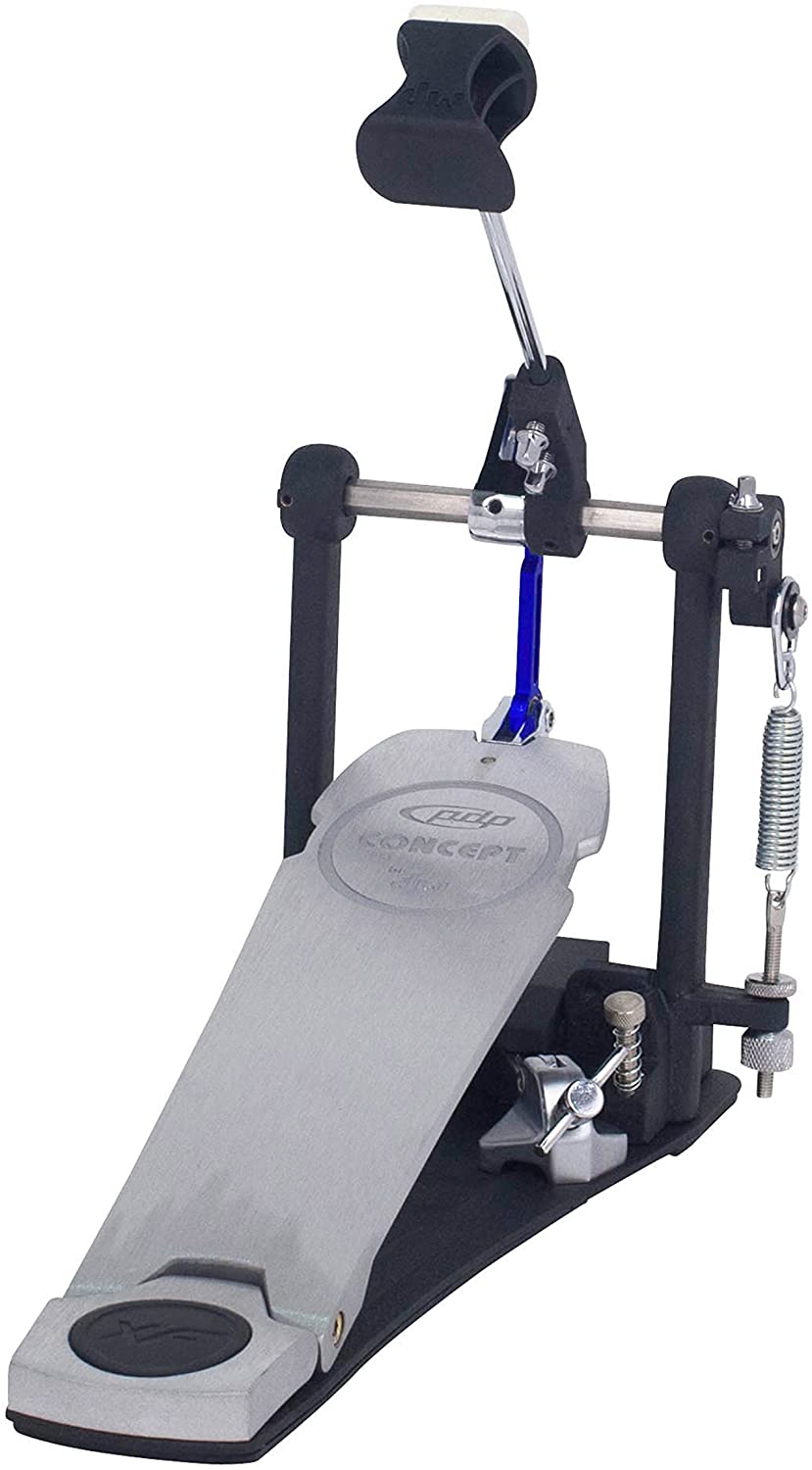
The Concept Series pedals are available in both chain-drive and direct-drive configurations, with the latter being the topic of this review. Aside from the eye-catching cobalt blue drive linkage, other features include XF extended brushed aluminum footboards, offset toe clamps, retractable spurs, DW air beaters, DW spring rocker adjustment, lightweight black aluminum baseplates, and needle bearing hinges.
Several of these capabilities have been inherited from pro-level DW models such as the 5000 and 9000, as you may have seen. Which, given that they have become widely recognized as the industry standard for bass pedals, should not be overlooked.
Pros
- A fantastic first direct drive pedal
- Perfect for intermediate players
- There are several DW-level characteristics
- Excellent value
Cons
- Beater may lose resistance after time
Conclusion
With all these different pedals in mind, each with unique and varying qualities. I believe the pedal with the best bang for your buck while keeping quality in mind would be Tama Iron Cobra Bass Pedal. The redesigned beater is likely to be the first thing that draws your attention to the new model. The beater faces are much smaller in diameter than a standard sized beater, but much deeper.
Tama says that the Iron Cobra’s Power-Strike beater employs solid black foam to create a forceful low to mid frequency sound from the bass drum.
The angle of the face is adjustable, like with other Iron Cobra beaters, to provide a square contact on the drum head. The mechanism that connects the pedal to the hoop has been entirely redesigned (again for both pedals), adding more support and stability to the pedal.
FAQ
Answer: This is largely based on your individual budget, as the price range for this type of goods varies substantially. If you need to be very frugal with your money, you can spend less than $100. However, if you want to splurge and get one of the greatest items on the market, you should be prepared to pay up to $700 for a double pedal. Before narrowing your search, it’s a good idea to browse around a bit to get a better sense of the various pricing ranges.
Answer: If you’ve made it this far in the article, it’s a fairly strong indication that you’re ready to get a new bass drum pedal. You’re especially prepared if you’re a passionate drummer looking to improve your performance and practice abilities.
Answer: If you read through the choices above, you will notice versions of the models here that are double bass pedals. The term “dual” merely refers to the connection of two pedals. If you have two bass drums on your kit, you might want to check into double bass pedals. If not, this isn’t a feature you’d want. Another personal preference for drummers is to get a double bass set.
For some further reading on interesting drum gear, check out the following articles:
Best Double Base Pedal Options: To Get that Perfect Kick!
Alesis Turbo Mesh Kit Review and Guide: Here’s Why I Wouldn’t Recommend It


